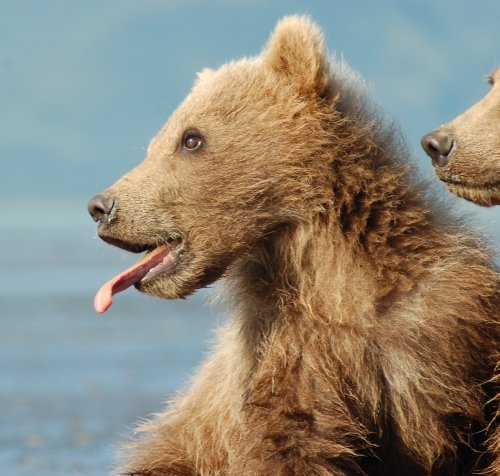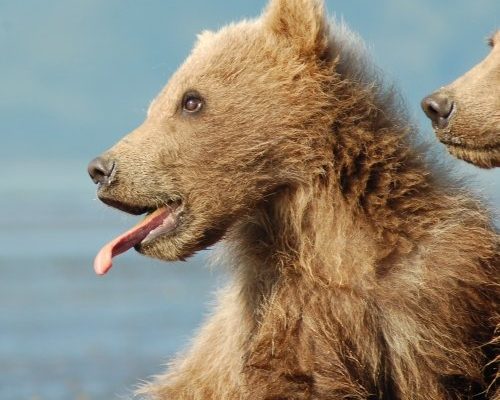
The story begins millions of years ago, long before grizzlies as we know them today existed. Instead, their ancestors were wandering the Earth, laying the foundation for what would become one of North America’s most iconic species. So, grab your virtual hiking boots, and let’s take an adventure through the evolutionary timeline of the grizzly bear!
Origins of Bears: A Walk Through Time
To truly appreciate the grizzly bear, we need to start at the beginning. Bears are part of the family Ursidae, which diverged from other carnivorous mammals about 38 million years ago. The earliest members of this family were small and nimble, much different from the massive bears we see today. They thrived in diverse habitats, adapting over time to various environments.
Around 20 million years ago, different bear species began to emerge. One of the ancestors of the grizzly is the Ursus arctos, which began to spread across Europe, Asia, and North America. This evolutionary branch adapted to a variety of climates, developing traits that would help them survive in different terrains. You might say that this was their first “family reunion,” where they learned to be tough and resilient.
The grizzly bear’s evolutionary path took a more defined turn during the Ice Age, around 2.5 million years ago. As glaciers advanced and retreated, these bears adapted to colder climates. They developed thicker fur, larger bodies, and a diet that allowed them to thrive in harsh conditions. This adaptability played a crucial role in their survival as they faced changing environments time and again.
The Rise of the Grizzly Bear
Fast forward to about 500,000 years ago, and we see the grizzly bear emerging as a distinct species in North America. Known scientifically as Ursus arctos horribilis, grizzlies are easily recognized by their impressive size and distinctive hump. They evolved to fill a vital niche in their ecosystem, becoming top predators with a diet that included everything from berries to fish to small mammals.
Grizzlies are fascinating creatures, showcasing powerful adaptations. Their strong claws are perfect for digging up roots or tearing apart carcasses, while their excellent sense of smell helps them locate food from miles away. Honestly, can you imagine being able to smell food from that far away? It’s like having superpowers in the animal kingdom!
What’s even cooler is that grizzly bears are not just solitary creatures. They often gather in family groups and demonstrate social behaviors, which is somewhat unique for large predators. This social aspect can be traced back to their evolutionary need for cooperation when it comes to raising cubs or finding food.
Climate Change and Evolution
As we look deeper into the story of the grizzly bear, climate change comes into play. The Earth’s climate has undergone significant changes over millions of years, and grizzlies have had to adapt continuously. With the last Ice Age ending about 12,000 years ago, the warming climate created vast changes in the habitats where grizzlies roamed.
This warming led to shifts in vegetation and animal populations. Grizzlies evolved to utilize these changing resources. Their diet became more varied, allowing them to exploit new food sources like berries, nuts, and fish. You might be wondering how they manage to adapt so successfully. Their ability to change their eating habits and foraging behavior has been key to their survival.
This adaptability has also meant that grizzly populations have fluctuated over time, often mirroring the landscape they inhabit. For instance, after the Ice Age, grizzlies migrated to new areas, creating isolated populations. Some of these populations eventually evolved into subspecies, contributing to the diverse array of bears we see today.
The Grizzly Bear Today: A Resilient Survivor
Today, the grizzly bear can be found across parts of North America, from Alaska to the northern Rockies. They have become symbolic of wilderness and conservation efforts. However, their survival remains threatened by habitat loss, climate change, and human activities. The evolutionary history of the grizzly bear is not just a tale of the past; it’s also a call to action for the future.
You might think of the grizzly bear as a living testament to resilience. Despite facing challenges, they continue to adapt and survive in various environments. Conservation efforts are crucial for protecting their habitats and ensuring future generations can witness the grandeur of these magnificent animals.
Let’s be real: if we lose the grizzly bear, we lose a part of our natural heritage. By understanding their evolutionary journey, we gain insight into the importance of preserving their legacy.
Conservation Efforts and Future Challenges
Looking ahead, the challenges facing grizzly bears are significant. Conservation efforts are underway, but they require public support and awareness. Organizations are working to protect their habitats, reduce conflicts with humans, and promote coexistence. Community engagement is vital in these efforts.
Grizzly bears also face challenges from climate change, which is affecting food availability and habitat suitability. As temperatures rise and ecosystems shift, determining how grizzlies will adapt is crucial. Here’s the thing: understanding their evolutionary history can provide clues to how they might respond to future changes. It’s like having a sneak peek into their survival strategies!
Public awareness is key. Learning about the grizzly bear and spreading that knowledge can help foster a culture of respect and conservation. After all, we all share this planet, and it’s up to us to ensure that these incredible creatures continue to roam our forests for years to come.
The evolutionary history of the grizzly bear is a captivating saga of adaptation and resilience. From their ancient ancestors to the majestic creatures we see today, they’ve navigated the challenges of changing environments with grace. As we uncover their story, it’s clear that the grizzly bear is more than just a powerful predator; it’s a symbol of the wild and a reminder of the delicate balance of nature.
As you reflect on this journey, consider what role you can play in protecting the future of the grizzly bear. Whether it’s supporting conservation efforts, educating others, or simply appreciating these magnificent animals, every little bit helps. The grizzly bear’s story is ongoing, and with our support, it can continue for generations to come. Let’s ensure that the fire we see at the campfire remains lit for years ahead—because the story of the grizzly bear is one worth telling.

